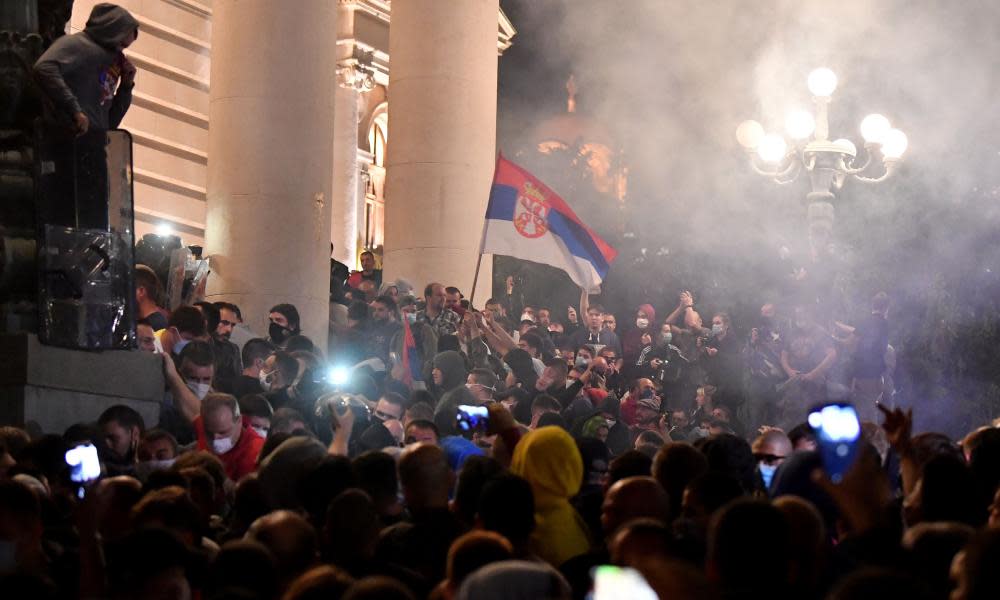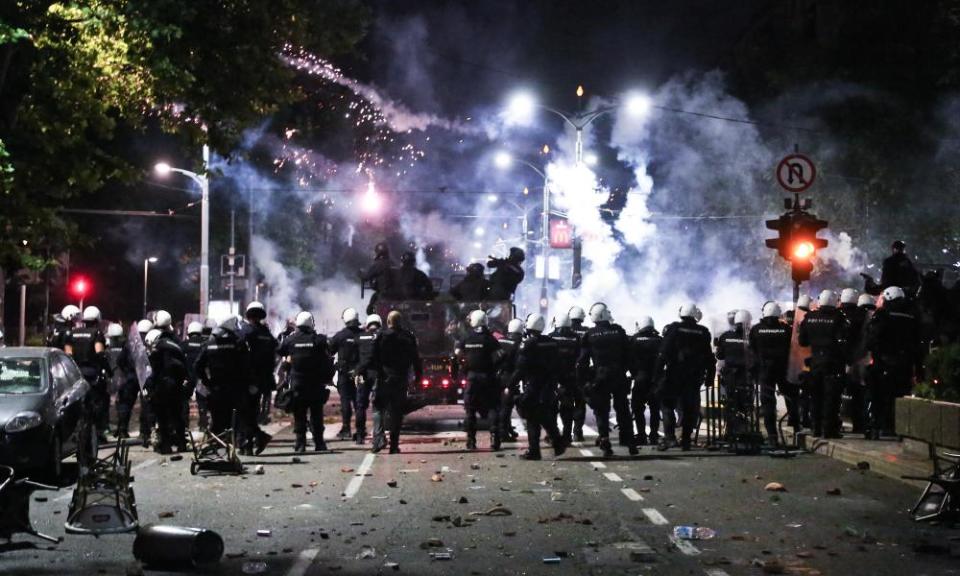Violence at Belgrade protest over renewed lockdown measures

Protesters and police clashed violently in Belgrade on Tuesday evening amid anger over the return of strict lockdown measures to tackle coronavirus. Earlier on Tuesday a weekend curfew was announced after a rise in Covid-19 cases in Serbia and across the western Balkans.
A group of protesters stormed the parliament in Belgrade, and police responded with teargas and a show of force. A police spokesperson said protesters threw rocks, bottles and other objects at officers and set five police vehicles on fire. Police said 23 people were detained and 43 police officers were injured. Seventeen demonstrators also sustained injuries.
On Tuesday Serbia recorded 13 more coronavirus deaths, its highest daily toll to date, as well as 299 newly recorded infections.
“Nobody can endure these numbers. We don’t want to kill our doctors,” said the president, Aleksandar Vučić, announcing the strict weekend curfew. He said a government body would decide whether it should apply nationwide or only to the capital.

Serbia’s coronavirus strategy was shaped by a group of Chinese experts dispatched to Belgrade by the Chinese government in the spring. They recommended strict measures to try to prevent the spread of the virus, but in recent weeks the country had opened up again.
Last week Vučić’s party won a crushing majority in a parliamentary election that was boycotted by most of the opposition, who complained over increasing authoritarianism. Some accused Vučić of ending the lockdown too early to facilitate holding the election and much of the anger at the protest was over a feeling that the security measures had been tailored to fit the political situation..
Speaking at an online panel with the Hungarian and Slovenian prime ministers on Wednesday morning, Vučić did not mention the protests but said he had rejected demands for a complete lockdown a week ago.
“Seven days ago I thought to impose once again lockdown in the entire country,” he said. “If we would have done that, we would have no chance to survive economically, and we need to live with this, we need to take all precautionary measures but we need to keep on working very hard, just to protect our business community and our workers.”
Serbia and Montenegro were two of the 15 countries that the EU added to a travel green list last week, allowing citizens to enter the bloc with no restrictions, but some EU nations have kept stricter measures.

Austria last week issued its highest category of travel warning for the whole of the western Balkans, recommending that any Austrian citizens travelling there return home immediately, where they should self-isolate for 14 days. The move was linked to a reported increase in cases in Austria from travellers arriving from the region.
On Saturday, Bosnia recorded its highest daily number of cases, with 289 new infections including 99 in the capital, Sarajevo, where life has largely returned to normal after the end of lockdown.
In Kosovo there was also a spike in cases, and on Sunday the prime minister, Avdullah Hoti, announced the introduction of curfews after 9pm in a number of cities including the capital, Pristina. Bars and restaurants were also required to close at 9pm.

 Yahoo News
Yahoo News 
